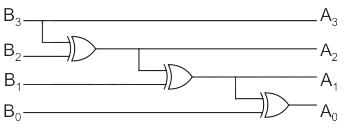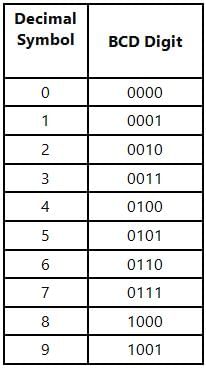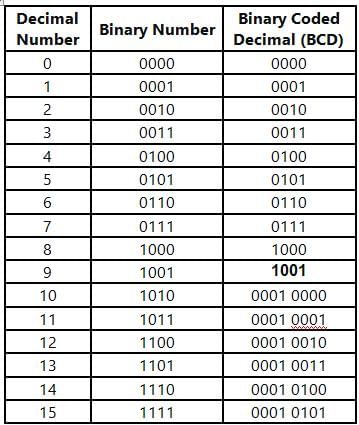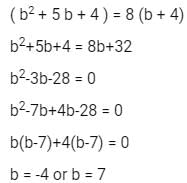Electrical Engineering (EE) Exam > Electrical Engineering (EE) Tests > Test: Number System & Binary Codes - 2 - Electrical Engineering (EE) MCQ
Test: Number System & Binary Codes - 2 - Electrical Engineering (EE) MCQ
Test Description
15 Questions MCQ Test - Test: Number System & Binary Codes - 2
Test: Number System & Binary Codes - 2 for Electrical Engineering (EE) 2025 is part of Electrical Engineering (EE) preparation. The Test: Number System & Binary Codes - 2 questions and answers have been prepared
according to the Electrical Engineering (EE) exam syllabus.The Test: Number System & Binary Codes - 2 MCQs are made for Electrical Engineering (EE) 2025 Exam.
Find important definitions, questions, notes, meanings, examples, exercises, MCQs and online tests for Test: Number System & Binary Codes - 2 below.
Solutions of Test: Number System & Binary Codes - 2 questions in English are available as part of our course for Electrical Engineering (EE) & Test: Number System & Binary Codes - 2 solutions in
Hindi for Electrical Engineering (EE) course.
Download more important topics, notes, lectures and mock test series for Electrical Engineering (EE) Exam by signing up for free. Attempt Test: Number System & Binary Codes - 2 | 15 questions in 45 minutes | Mock test for Electrical Engineering (EE) preparation | Free important questions MCQ to study for Electrical Engineering (EE) Exam | Download free PDF with solutions
Test: Number System & Binary Codes - 2 - Question 1
The 4-bit Gray code for decimal number 5 is:
Detailed Solution for Test: Number System & Binary Codes - 2 - Question 1
Detailed Solution for Test: Number System & Binary Codes - 2 - Question 2
Detailed Solution for Test: Number System & Binary Codes - 2 - Question 3
Test: Number System & Binary Codes - 2 - Question 4
State the octal equivalent of hexa decimal number (B34)16.
Detailed Solution for Test: Number System & Binary Codes - 2 - Question 4
Test: Number System & Binary Codes - 2 - Question 5
Which of the following is an invalid state in 8-4-2-1 Binary Coded Decimal counter
Detailed Solution for Test: Number System & Binary Codes - 2 - Question 5
Detailed Solution for Test: Number System & Binary Codes - 2 - Question 6
Detailed Solution for Test: Number System & Binary Codes - 2 - Question 7
Detailed Solution for Test: Number System & Binary Codes - 2 - Question 8
Test: Number System & Binary Codes - 2 - Question 9
In Binary-coded Decimal (BCD) systems, the decimal number 81 is represented as
Detailed Solution for Test: Number System & Binary Codes - 2 - Question 9
Test: Number System & Binary Codes - 2 - Question 10
Which of the following is not an invalid BCD Code?
Detailed Solution for Test: Number System & Binary Codes - 2 - Question 10
Detailed Solution for Test: Number System & Binary Codes - 2 - Question 11
*Answer can only contain numeric values
Test: Number System & Binary Codes - 2 - Question 12
If (154)b / (14)b =(8)10, then what is the radix b is _______?
Detailed Solution for Test: Number System & Binary Codes - 2 - Question 12
Test: Number System & Binary Codes - 2 - Question 13
Find the Octal equivalent of hexa decimal number (FB2)16?
Detailed Solution for Test: Number System & Binary Codes - 2 - Question 13
Test: Number System & Binary Codes - 2 - Question 14
In excess-three code, the 4-bit group that is used is ____.
Detailed Solution for Test: Number System & Binary Codes - 2 - Question 14
Detailed Solution for Test: Number System & Binary Codes - 2 - Question 15
Information about Test: Number System & Binary Codes - 2 Page
In this test you can find the Exam questions for Test: Number System & Binary Codes - 2 solved & explained in the simplest way possible.
Besides giving Questions and answers for Test: Number System & Binary Codes - 2, EduRev gives you an ample number of Online tests for practice
Download as PDF



























